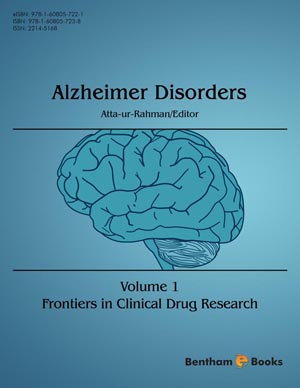Abstract
Despite the large availability of data regarding the mechanisms at the basis of β- amyloid production in Alzheimer’s disease (AD), the factors responsible for β-amyloid accumulation in neurons of AD patients until now have not been entirely clarified. Several metal ions have been indicated as possible triggers of the main conformational modifications of β-amyloid protein, and metal homeostasis disarrangement has been proposed as a relevant pathological cofactor of neurodegeneration. Epidemiological evidences suggest a possible association between exposure to increased amounts of multiple metals and onset and progression of AD. According to this hypothesis, metals could induce oxidative stress in neurons, developing neurodegenerative disease. In this chapter, the role of various trace metals as cofactors of a poor cognitive function and of an increased risk of dementia leading to AD will be discussed. In particular, this study is aimed to critically analyze the role played by copper, iron, zinc and aluminium in neurodegeneration. Based on the current evidences concerning the relationship between these metal ions and onset and progression of AD, no definitive recommendations are, at the best of our knowledge, possible. However, foods rich in metals such as iron and copper should be discouraged, as well as caution should be suggested in exposure to aluminium sources. Further studies on the relationship between metal overexposure and AD development hopefully will open new opportunities for the prevention and management of neurodegenerative diseases.
Keywords: Alzheimer’s disease, neurodegenerative diseases, β-amyloid protein, oxidative stress, copper, iron, zinc, aluminium.






















